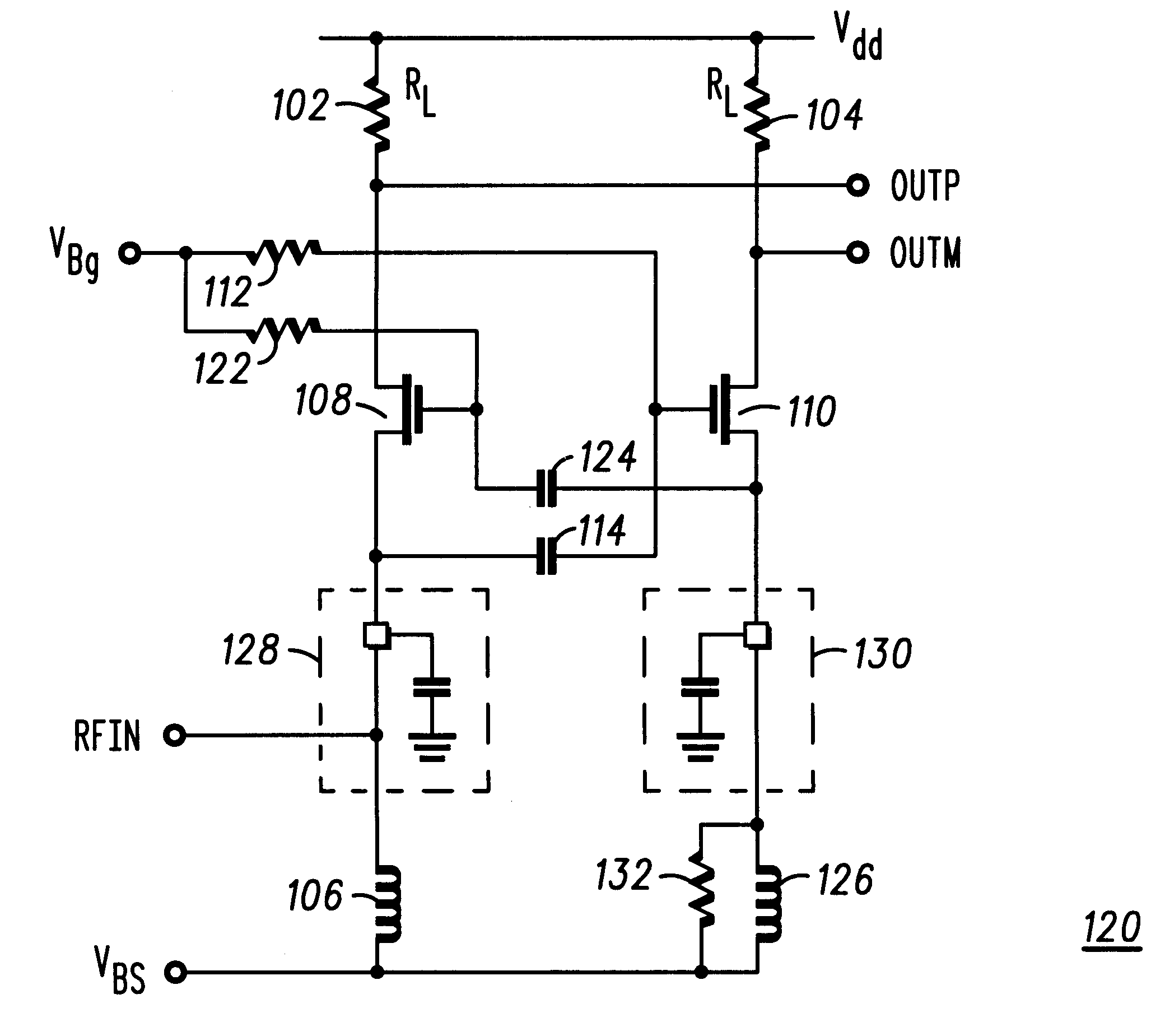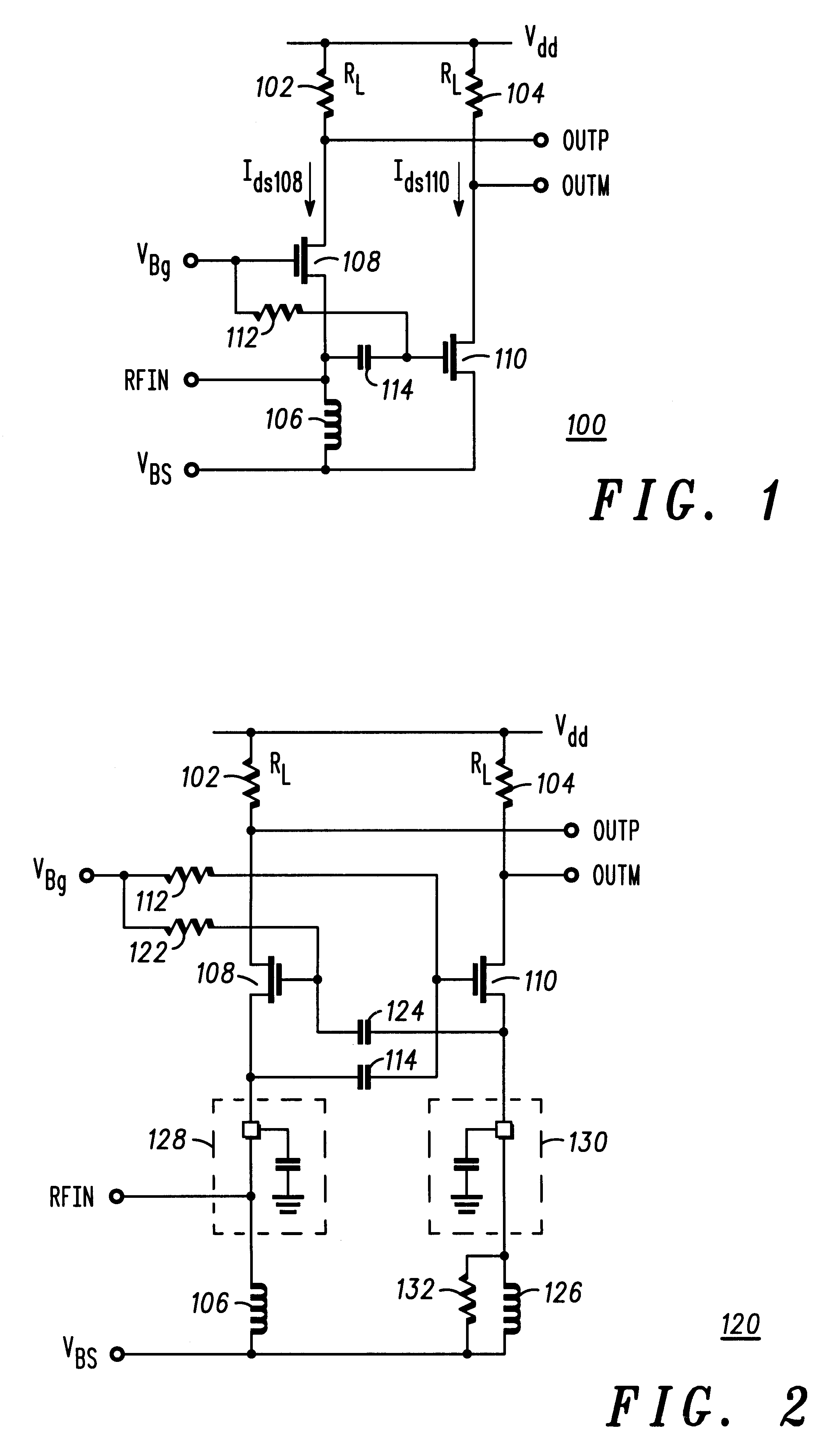Single ended input, differential output amplifier
a technology of differential output and input, applied in the direction of pulse automatic control, pulse manipulation, pulse technique, etc., can solve the problems of bipolar circuits, prohibitively expensive external balun or other tracking filters, and high external tracking filters
- Summary
- Abstract
- Description
- Claims
- Application Information
AI Technical Summary
Problems solved by technology
Method used
Image
Examples
Embodiment Construction
Turning now to the drawings, FIG. 1 schematically shows an example of a first embodiment single ended input differential output amplifier 100 according to the present invention. A matched pair of load resistors 102, 104, typically 200.OMEGA. each, connect a supply voltage (V.sub.dd) to a corresponding differential output OUTP and OUTM. An inductor 106, typically 1000 nh, connects input RFIN to a reference voltage V.sub.BS. The bulk substrate for FETs 108, 110 is grounded. A first field effect transistor (FET) 108 (n-type in this example) connects, drain to source, between load resistor 102 at output OUTP and inductor 106 at RFIN. A second FET 110 (also n-type in this example) connects, drain to source, between the second load resistor 104 at output OUTM and the reference voltage V.sub.BS. A gate bias resistor 112, typically 50 k.OMEGA., connects between the gates of FETs 108, 110. A gate bias voltage (V.sub.Bg) connects to the gate of FET 108 and resistor 112. A coupling capacitor 1...
PUM
 Login to view more
Login to view more Abstract
Description
Claims
Application Information
 Login to view more
Login to view more - R&D Engineer
- R&D Manager
- IP Professional
- Industry Leading Data Capabilities
- Powerful AI technology
- Patent DNA Extraction
Browse by: Latest US Patents, China's latest patents, Technical Efficacy Thesaurus, Application Domain, Technology Topic.
© 2024 PatSnap. All rights reserved.Legal|Privacy policy|Modern Slavery Act Transparency Statement|Sitemap


